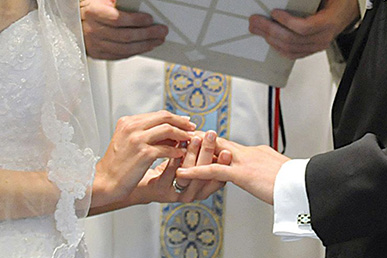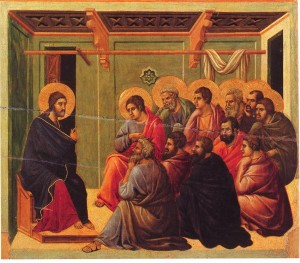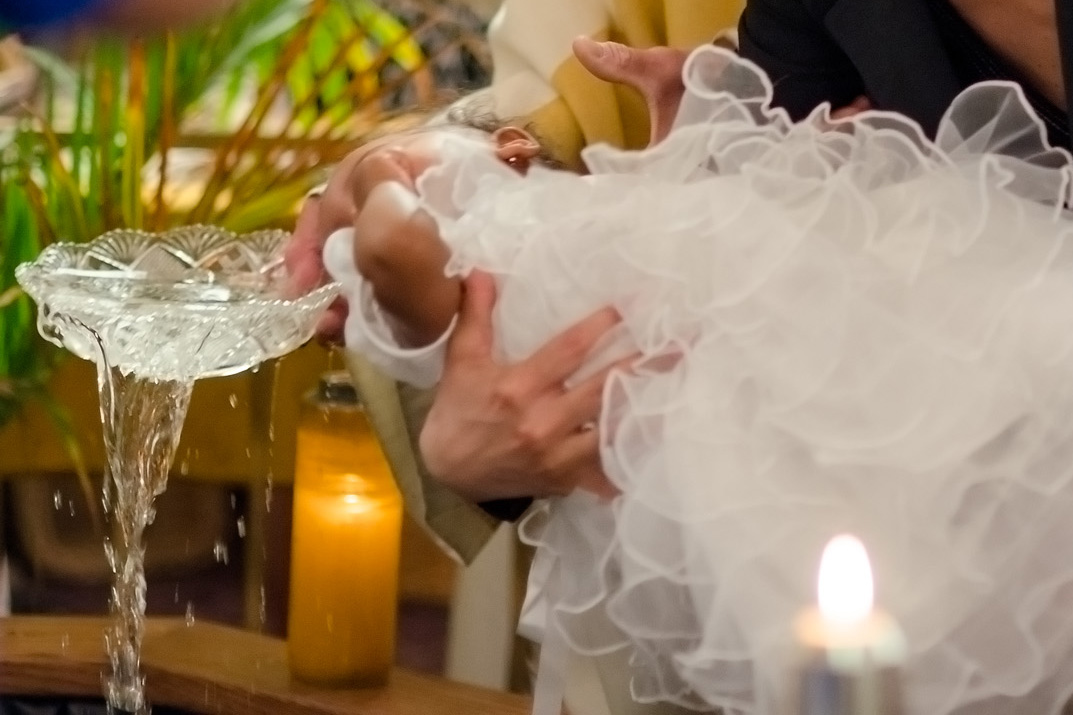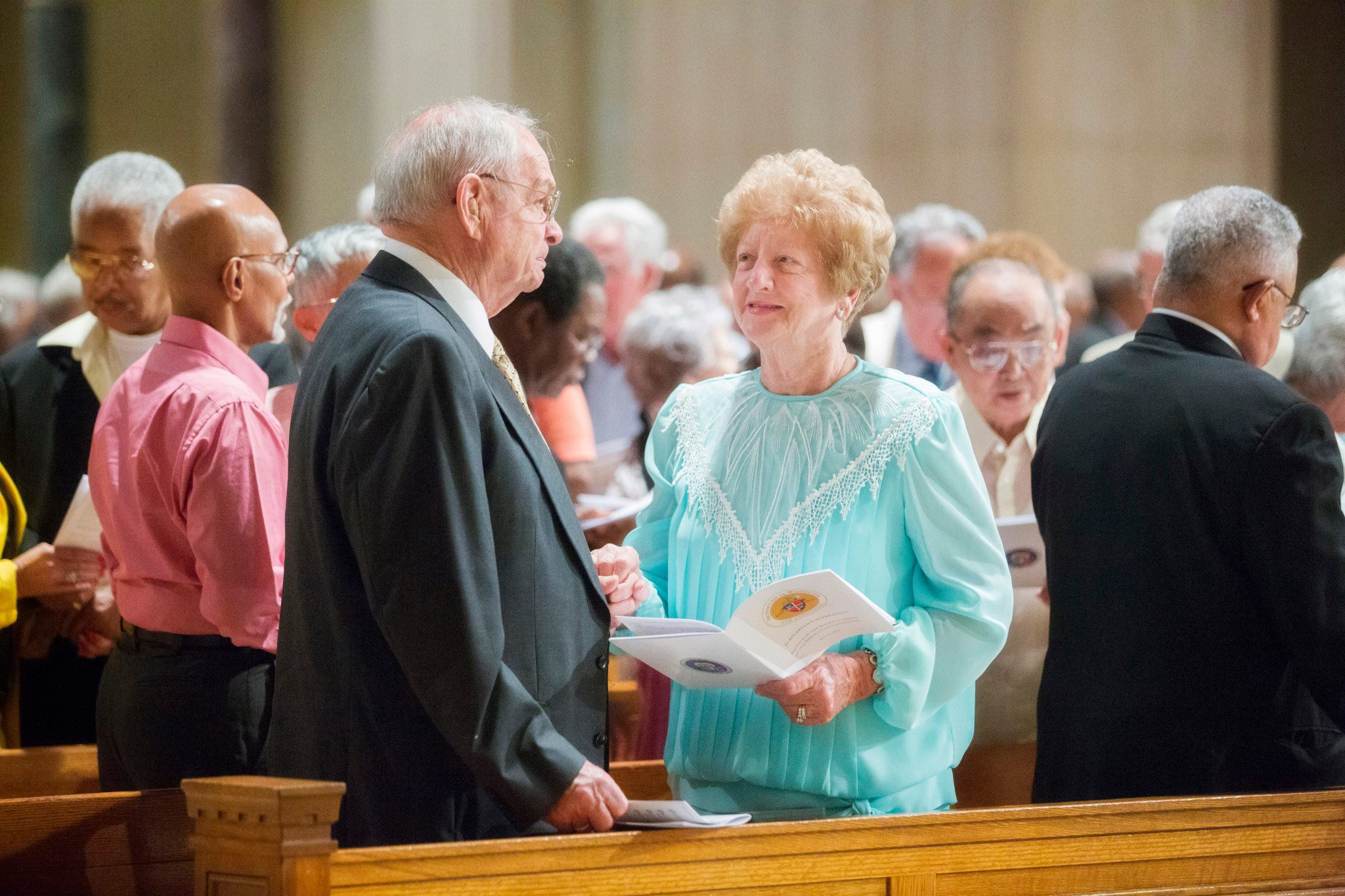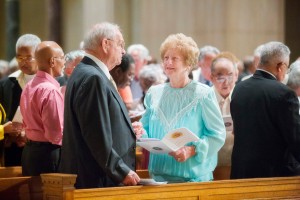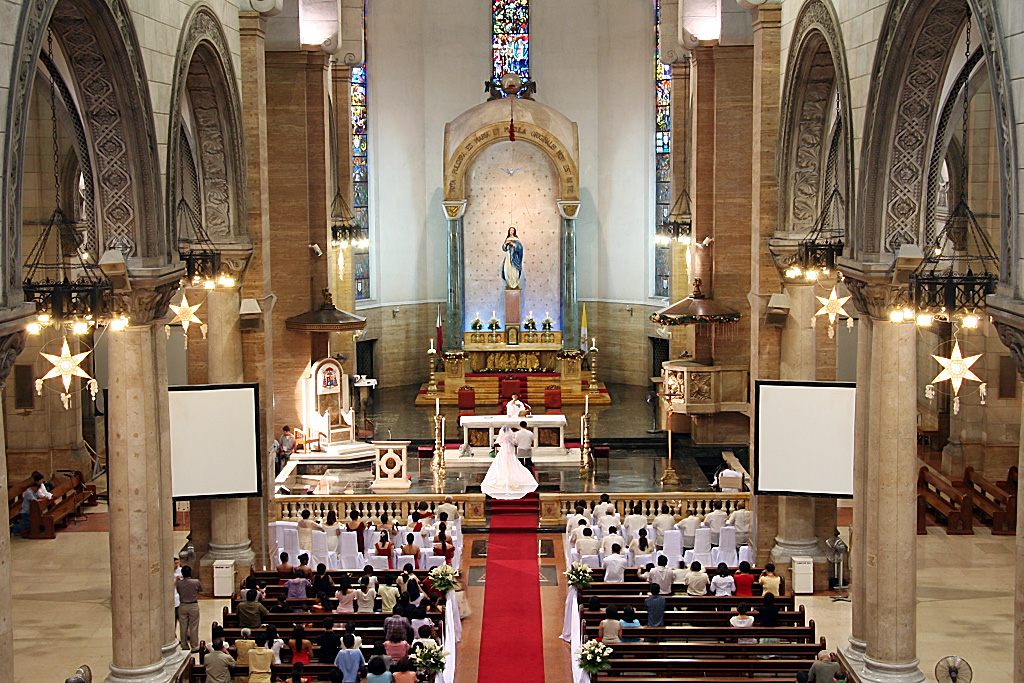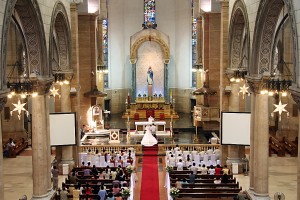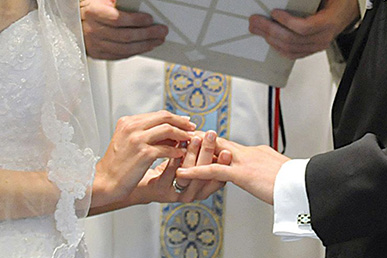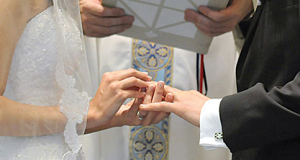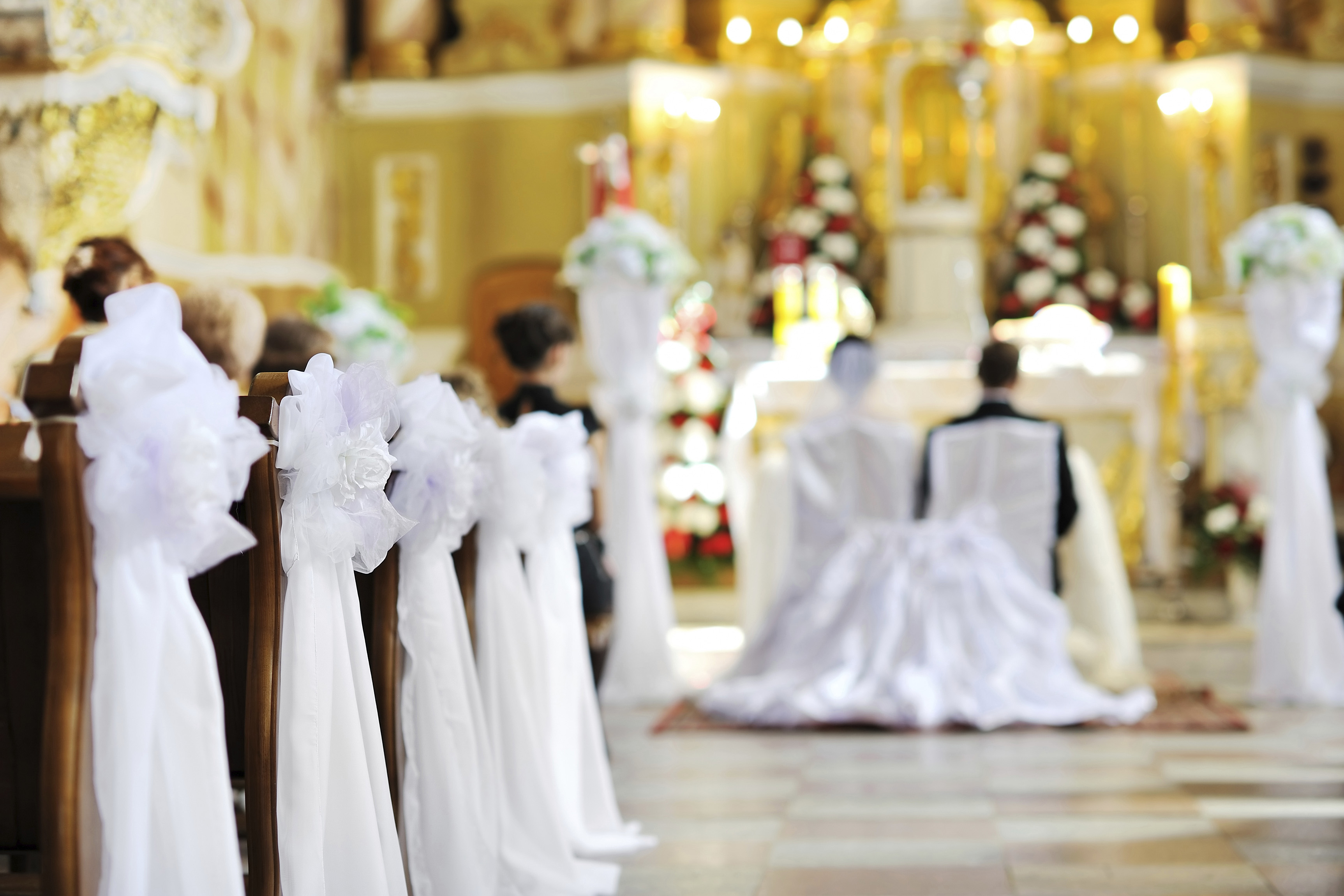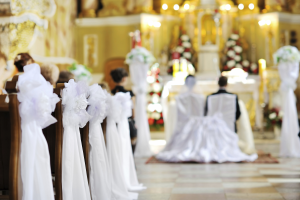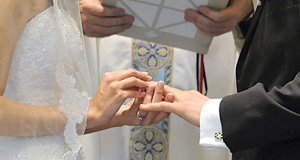 There’s an old story told about the legendary football coach, Vince Lombardi. At one point he was so concerned that the players on his team had lost any sense of the basics of the game that he summoned them all into a classroom and had them all sit down at desks. Most of them expected a detailed review of the playbook, with diagrams on the board of X’s, O’s, and arrows. But to their surprise, the blackboard was empty and no playbooks were in sight. Lombardi walked in and stood in front of the quiet room. In short order he reached behind the desk and held up a familiar object, saying, “Gentlemen, this is a football.”
There’s an old story told about the legendary football coach, Vince Lombardi. At one point he was so concerned that the players on his team had lost any sense of the basics of the game that he summoned them all into a classroom and had them all sit down at desks. Most of them expected a detailed review of the playbook, with diagrams on the board of X’s, O’s, and arrows. But to their surprise, the blackboard was empty and no playbooks were in sight. Lombardi walked in and stood in front of the quiet room. In short order he reached behind the desk and held up a familiar object, saying, “Gentlemen, this is a football.”
Talk about back to basics! Lombardi then proceeded to talk at length about the game and its most fundamental aspects. He described the object of the game, the different stances (such as offensive and defensive), the different positions (such as fullback and right guard), and so forth. To experienced players, the lecture must have been quite embarrassing. But sometimes people get so confused that we can no longer assume that even the most obvious things are obvious anymore.
Given the recent confusion about marriage, sexuality, and the family, and with the Synod that was called to address the confusion in some cases intensifying it (or at least the media reports have done so), it seems opportune for all of us to go back to basics. Perhaps it is time for one of us to reach behind the desk and hold up a book or two, saying, “Ladies and gentlemen, this is a Bible, and this is the Catechism, and this is what they say about the Sacrament of Holy Matrimony. There’s no need to reinvent, rename, or come up with new definitions. God has already taken care of all of that in what the Bible and the Catechism say.”
In the paragraphs that follow, I propose only a brief review of what these sources say. I recommend that you read the Catechism from paragraph 1601 to 1666. Can we not agree to go to sources of official Catholic Teaching? Despite what the Washington Post or the New York Times say, these teachings cannot change.
Back to basics! Here is what the Catechism and Sacred Scripture have to teach on marriage.
I. God is the Author of Matrimony – The Book of Genesis speaks to us not only of our creation but also of our very nature. In the first place, we are made for love because we are created in the image and likeness of God, who is love. A second and very important truth taught to us in the scriptural account of our creation is that man and woman were made for each other. God himself declares, It is not good for the man to be alone (Gn 2:18). So God created Eve from the very flesh, the very human nature of Adam. Note well that a woman is the suitable partner. A woman, not two or several women (hence bigamy and polygamy are excluded), and not another man (hence homosexual liaisons do not supply the suitable partner that makes a marriage). When Adam beheld Eve he was delighted and declared, Here at last is bone of my bones and flesh of my flesh (Gn 2:23). God also teaches in the Genesis account that in His creative act is the origin and understanding of marriage: For this reason a man leaves his father and his mother and cleaves to his wife, and they become one flesh (Gn 2:24).
Holy Matrimony is about Children – In Chapter One of Genesis, we are also given another important teaching about Matrimony. Adam and Eve are instructed by God, Be fruitful and multiply, and fill the earth and subdue it (Gn 1:28). Thus, the love of Adam and Eve was to reflect the love of God, which is fruitful and life-giving. Marriage has a central goal of producing children, hence its structure is both heterosexual and lasting, since that is what is first necessary and then best for children.
Here then is God’s plan for Holy Matrimony: a man and a woman in a unity of life and fruitful love so profound that they may be said to be one flesh. Adam sees Eve as his equal, bone of his bone and flesh of his flesh. He is delighted to behold her and acknowledges that it is not good that he should ever be without her and that he is completed and helped by her. Although the scriptural account does not record Eve’s reflections, we may presume that they were similar. Alone it was not possible for them to be fruitful and multiply. Alone and apart they could only find death; together as one they would experience the gifts of life and family.
To all demands that the Church recognize same-sex unions, polygamous unions, second (or third…) unions, or other irregular or unnatural unions as “marriages,” can only come the firm and clear answer, “No.” We recognize God as the author of marriage and are bound to what He has given and set forth both in Holy Scripture and Natural Law.
II. The Painful Reality of Sin – The wondrous communion of Adam and Eve intended by God and described in the book of Genesis was seriously disturbed by the consequences that flowed from the Original Sin they committed. This is dramatically illustrated by Adam’s response to God. When God noted that they had eaten from the tree of which he had forbidden them to eat, Adam blamed Eve, saying, It was that woman you put here with me, she gave me the fruit and so I ate it (Gn 3:12). See how strongly this contrasts with his former appreciation of Eve, whom he described as one with him, as bone of his bone and flesh of his flesh! Now division and hostility are experienced and expressed.
It is also highly significant that both realize that they are naked (Gn 3:7). Whereas before, their relationship was one of complete openness and trust, now they experience embarrassment and vulnerability before each other and before God. They feel they must cover up; they feel compelled to hide significant aspects of themselves.
God himself describes the consequences that will flow from the awful reality they have chosen. His words to Eve are particularly poignant: I will greatly multiply your pain in childbearing; in pain you shall bring forth children, yet your desire shall be for your husband, and he shall rule over you (Gn 3:16).
Adam, too, shall now have to toil for food to eat and the experience of Eve as his helpmate or co-worker seems greatly diminished (Gn. 3:17-19).
It is quite clear that sin and evil inflicted great harm on the original joy and communion between Adam and Eve. The Catechism describes these sad realities quite well:
This experience [of the evil flowing from Original Sin] makes itself felt in the relationships between man and woman. Their union has always been threatened by discord, a spirit of domination, infidelity, jealousy, and conflicts that can escalate into hatred and separation. This disorder can manifest itself more or less acutely, and can be more or less overcome according to the circumstances of cultures, eras, and individuals, but it does seem to have a universal character.According to faith the disorder we notice so painfully does not stem from the nature of man and woman, nor from the nature of their relations, but from sin. As a break with God, the first sin had for its first consequence the rupture of the original communion between man and woman. Their relations were distorted by mutual recriminations; their mutual attraction, the Creator’s own gift, changed into a relationship of domination and lust; and the beautiful vocation of man and woman to be fruitful, multiply, and subdue the earth was burdened by the pain of childbirth and the toil of work (Catechism 1606-1607).
The consequences of the divisions caused by sin continued to be felt down through the pages of the Old Testament in the polygamy of the patriarchs, which only gradually came to be forbidden, and in the permitting of divorce under Mosaic Law. Our Lord Jesus would later indicate that the fact that divorce was permitted was an indication of the “hardness of your hearts” (Mt 19:8).
III. Still a noble grace – Yet despite the distortion caused by sin, God continued to point to marriage’s lofty status by presenting it as one of the primary images of His covenant with His people. God was the faithful spouse of His bride, Israel. Through the prophets, He reminded His bride that she was espoused to Him. Sin was infidelity, but God’s love was everlasting and, though He chastised Israel, He would never forsake her. God even used romantic imagery. Consider this example from the Prophet Hosea:
“Therefore, behold, I will allure Israel, and bring her into the wilderness, and speak tenderly to her … And there she shall answer as in the days of her youth, as at the time when she came out of the land of Egypt. “And in that day, says the LORD, you will call me, ‘My husband’ … and I will make you lie down in safety. And I will betroth you to me for ever; I will betroth you to me in righteousness and in justice, in steadfast love, and in mercy. I will betroth you to me in faithfulness; and you shall know the LORD (Hosea 2:14-20).
And so it was that God never cast aside the lofty ideals of marriage. He continued to proclaim them to His people.
IV. Established by Christ as a Sacrament – It is in this context that Jesus proclaimed an absolute return to God’s original plan, which the regime of sin had distorted.
In the Gospels, Jesus proclaims His intention to return to God’s original plan for marriage. Divorce had entered the scene through sin. But Jesus came to destroy the ancient power of sin and cancel its effects. He is able to empower couples, through His healing grace, to live up to the original vision of marriage given by God.
This, too, is clearly taught in the Catechism: In his preaching Jesus unequivocally taught the original meaning of the union of man and woman as the Creator willed it from the beginning. Permission given by Moses to divorce one’s wife was a concession to the hardness of hearts (Mt. 19:8). The matrimonial union of man and woman is indissoluble: God himself has determined it “what therefore God has joined together, let no man put asunder”(Mt 19:6). This unequivocal insistence on the indissolubility of the marriage bond may have left some perplexed and could seem to be a demand impossible to realize. However, Jesus … himself gives the strength and grace to live marriage in the new dimension of the Reign of God. It is by following Christ, renouncing themselves, and taking up their crosses that spouses will be able to “receive” the original meaning of marriage and live it with the help of Christ (Mt. 19:11). (Catechism 1614-1615)
It is in the context of His solemn teaching on marriage that Christ established marriage as a sacrament and St. Paul could declare it a great mystery (sacramentum) . The Catholic Church has acknowledged it as such ever since.
Note the phrase used in the Catechism, which speaks of Christ’s unequivocal insistence on the indissolubility of the marriage bond. The word “unequivocal” is a strong one, and must be insisted on, especially to those who wish to equivocate on this matter. Let this be clear: no validly conferred marital bond can be broken. What God has joined is not to be separated. To leave a valid marriage and enter another sexual union is to be in an ongoing state of adultery.
V. The Outward Sign of the Sacrament – The outward sign, that which is seen and heard, is the exchange of consent (vows) before the Church. The Church is represented by a priest or a deacon. The vows are usually worded in this or similar fashion: I take you to be my wife/husband. I promise to be true to you in good times and in bad, in sickness and in health. I will love you and honor you all the days of my life.
Note here the rather all-encompassing quality of these vows! Often a reminder of these vows can help to overrule notions that a marriage should end. For, indeed, there will be some bad times, sickness, and even poverty. But marriage is for better OR worse, in health AND in sickness, for richer OR for poorer.
Too many want their marriage to be ideal, and if there is any ordeal they want a new deal. But the vows speak directly to the fact that while marriage does bring joy and many graces, no marriage is perfect. Difficult times must be endured as part of the expected picture.
VI. The Graces of the Sacrament – The three most basic qualities of Christian marriage are that it is permanent, faithful, and fruitful. The graces of the Sacrament all serve to create and preserve these realities.
Permanence: Since God himself is the author of every valid marriage, there arises a bond between the couple that can never be broken. This stable and faithful relationship is itself a great blessing since it provides the couple a sturdy foundation on which to live and experience trust, mutual support, and encouragement. It also provides the best environment in which to raise children. It can seem difficult, even impossible, to bind oneself for life to another human being. This makes it all the more important to proclaim the Good News that God loves us with a definitive and irrevocable love, that married couples share in this love, that it supports and sustains them, and that by their own faithfulness they can be witnesses to God’s faithful love. (Catechism 1649)
Faithfulness: Marital love is also of its nature always undivided and exclusive. This love is a special love, which is never to be shared by the spouses with others. In addition to these graces, Christian couples receive all the graces they need to perfect their love for one another and strengthen their unity. By these graces they assist one another to grow in maturity and holiness. Marriage helps to overcome self-absorption, egoism, pursuit of one’s own pleasure, and to open oneself to the other, to mutual aid and to self-giving. (Catechism 1609)
Fruitfulness: Children are the supreme gift of marriage and contribute greatly to the good of the parents themselves. God’s love is fruitful and marital love is to be a reflection of that love. When God established marriage, He instructed the first spouses as to its nature, Be fruitful and multiply (Gn 1:28). So by its very nature the institution of marriage and married love is ordered to the procreation and education of children. This of course includes more than a college education. It includes every aspect of the personal development of children: physical, mental, emotional, spiritual, and supernatural life. God grants to parents an awesome dignity when He entrusts the care of immortal souls to them. This of itself helps us to recognize the high calling of marital life and helps us to understand how crucial and necessary the Sacrament of Matrimony is for the Church and for the world.
VII. The structure of marriage as being both heterosexual and stable (permanent) is due to its essential work of raising children.
Our modern culture speaks of marriage as being about and for the happiness of the adults. The Lord, however, sets forth marriage as being first and foremost about children and what is best for them. Our culture prattles on endlessly about the rights and feelings of the adults in the marriage, but it is what is best for children that should be the first priority in speaking of Matrimony, its proper structure, and the conduct of the spouses.
The modern world has wholly shifted the focus to adults, insisting on their absolute “right” to resist children through contraception and even to kill them through abortion. And this is all so that adults can follow their own wishes. In separating children from marriage and sex, we have separated what God has joined and are now reaping a whirlwind of confusion along with bad and destructive behaviors.
Back to basics, fellow Catholics! Read the Scriptures; study the Catechism; respect Natural Law. And above all, get on your knees and pray for an end to the confusion. It will take a miracle in this darkened and decadent world, but God is able!

